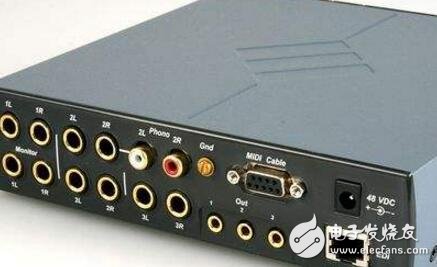Digital audio is a technology that uses digital methods to record, store, edit, compress, or play sound. It represents a new generation of sound development driven by advancements in digital signal processing, computer technology, and multimedia systems. Its primary applications are in music production and post-production processes.
Computer data is stored in binary form—0s and 1s. Digital audio works by first converting analog sound waves into digital signals, which are then transformed into binary data for storage. When played back, this digital data is converted back into an analog signal and sent to a speaker for playback. Unlike traditional audio formats such as tapes, radio, or TV, digital audio offers significant advantages: it's easier to store, cheaper, maintains high fidelity during transmission, and allows for easy editing and manipulation.

**Digital Audio Interfaces:**
Common digital audio interfaces include I2S, PCM, and SPDIF. Here’s a brief overview:
- **I2S Interface:** This interface supports mono or stereo audio and uses PCM format. It comes in three types: left-justified, right-aligned, and standard I2S. I2S provides better timing performance than SPDIF and is ideal for short-distance communication.
- **PCM Interface:** Also known as the DSP mode interface, it is primarily used for mono or stereo audio but can theoretically support multi-channel audio as well. It also uses PCM format.
- **SPDIF Interface:** Short for Sony/Philips Digital Interface, it transmits digital audio via coaxial or optical cables. Optical cables offer better noise resistance. SPDIF can transmit both PCM streams and compressed surround sound formats like Dolby Digital and DTS.
**Digital Audio Applications:**
While digital audio isn't widely used in all areas, it has become essential in music recording and post-production. It converts audio files into digital data, which can be easily stored, edited, and played back. During playback, the digital data is converted back to an analog signal for output through speakers. This process results in clearer, more accurate sound compared to traditional audio sources like radios or TVs. Digital audio offers convenience, low cost, and high-quality storage with minimal loss during transmission. Editing and processing are also much more efficient.

Some basic concepts in digital audio include sampling rate, compression ratio, bit rate, and quantization. A higher sampling rate generally means better sound quality. The compression ratio refers to the size reduction of a file. Bit rate indicates the amount of data processed per second, while quantization deals with how accurately the digital system represents the original sound. These elements together define the quality and characteristics of digital audio. If you're interested in learning more about these fundamentals, there's a wealth of information available to explore further.

Flex Power Supply,Flex Power Supply 80Plus,700W Adapter Server Power Supply,Flex 700W Power Supply
Boluo Xurong Electronics Co., Ltd. , https://www.greenleaf-pc.com